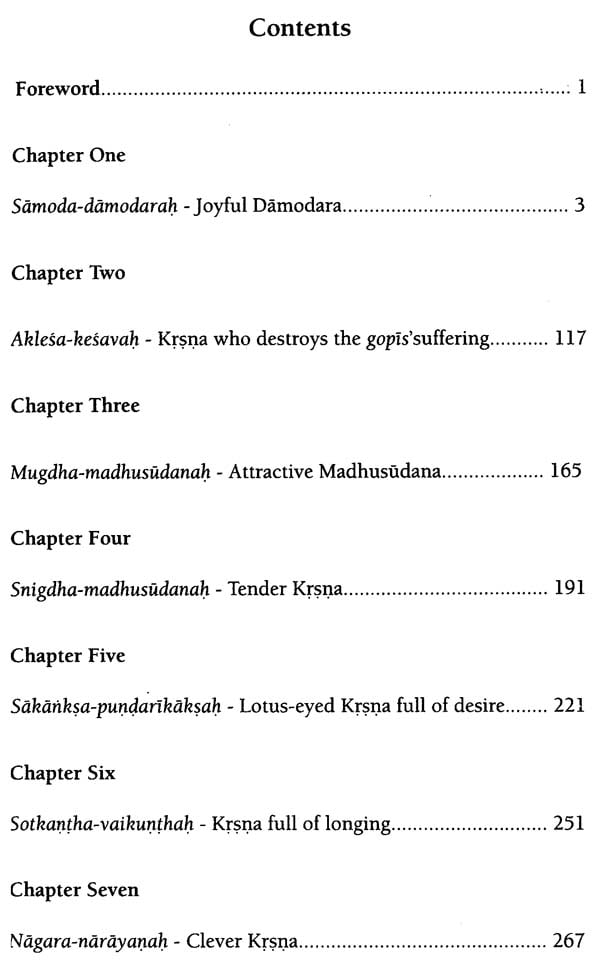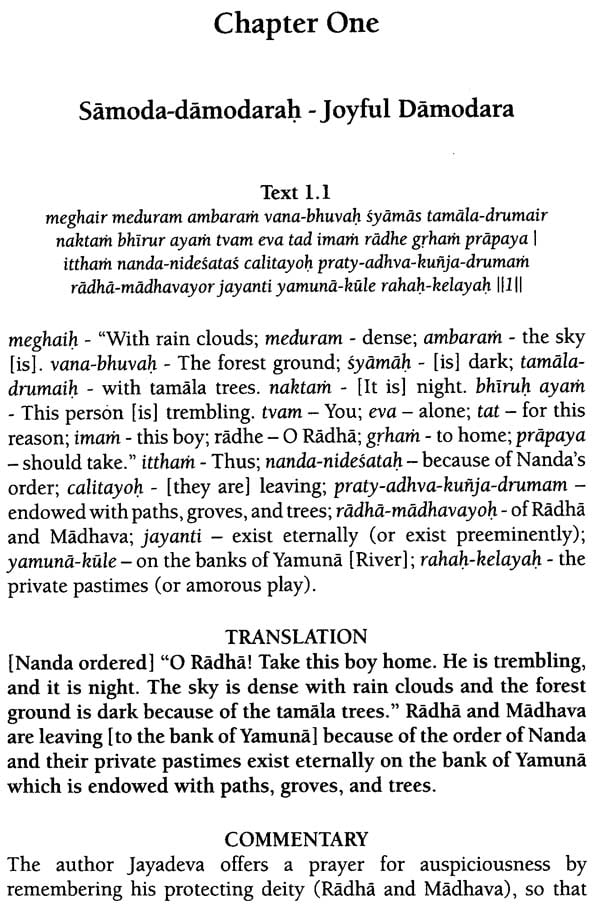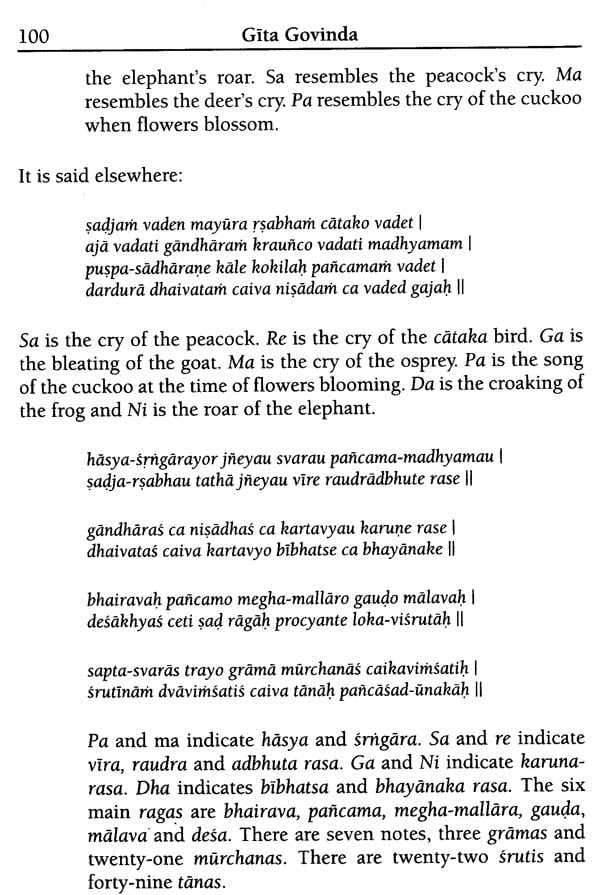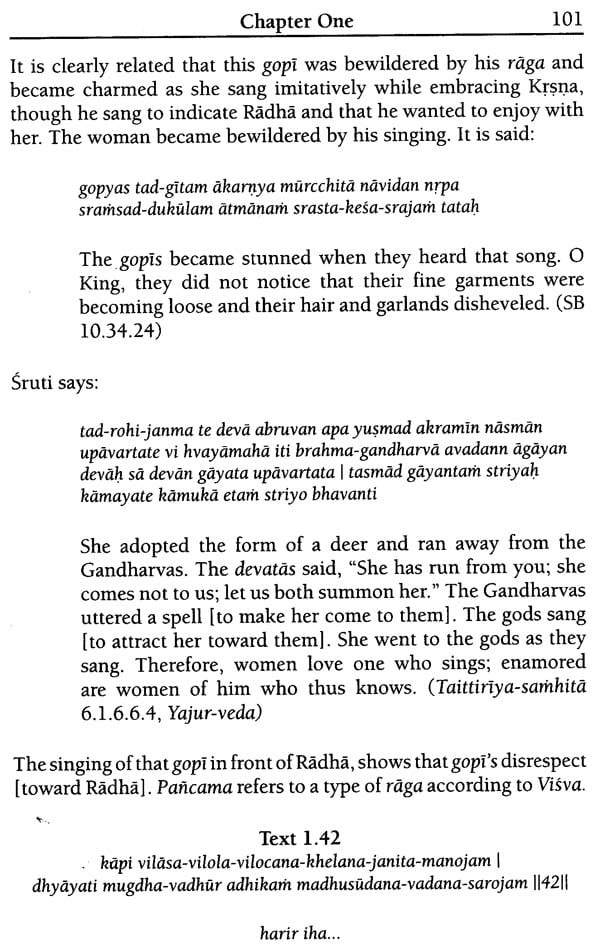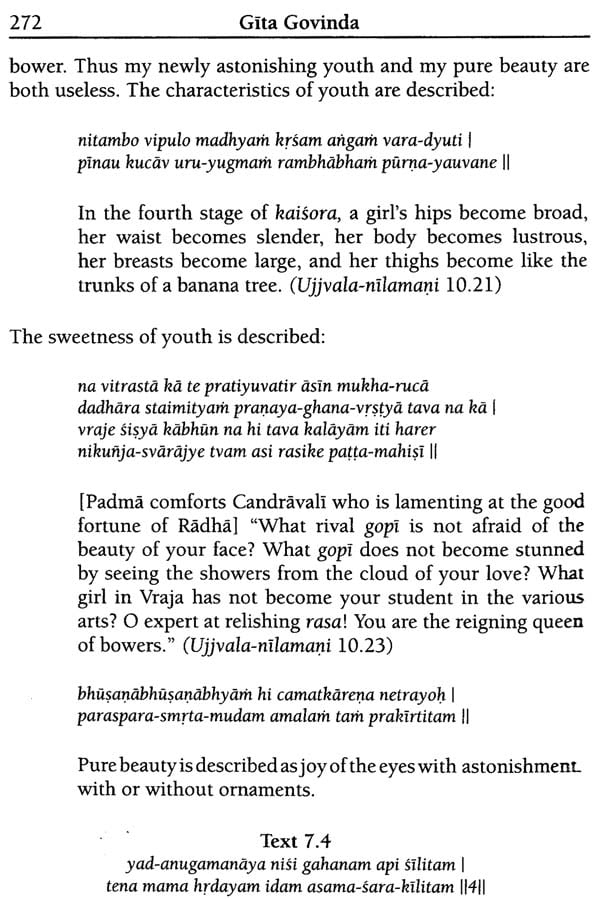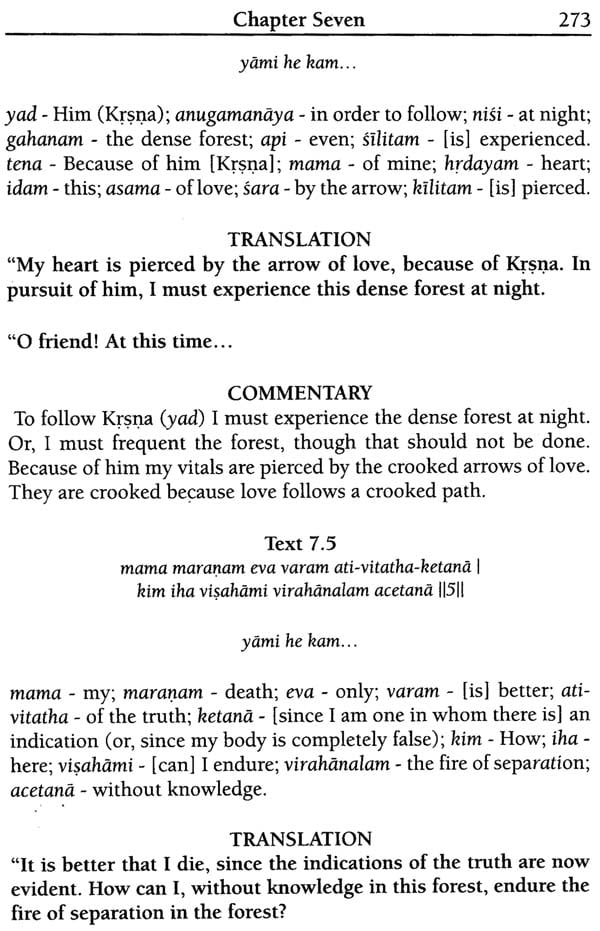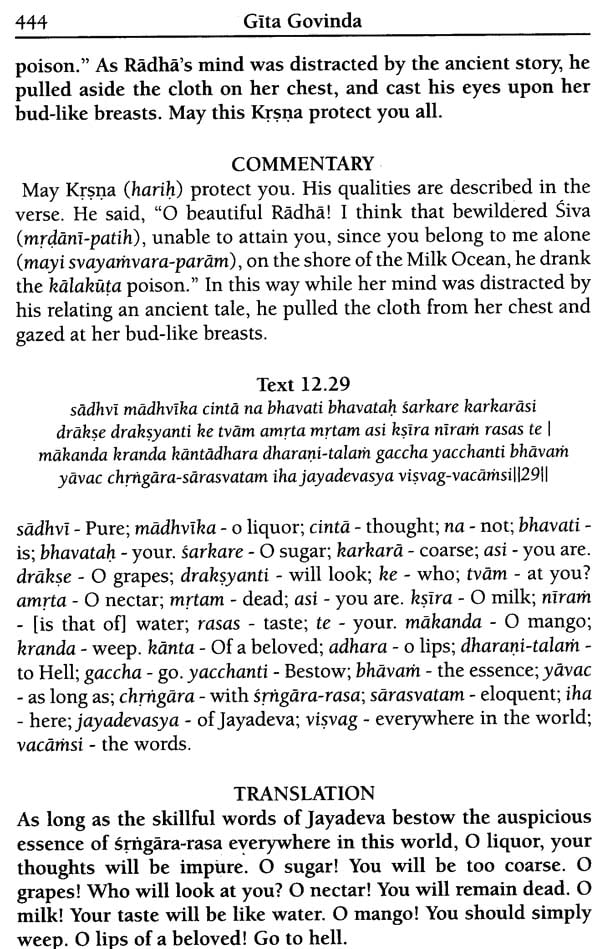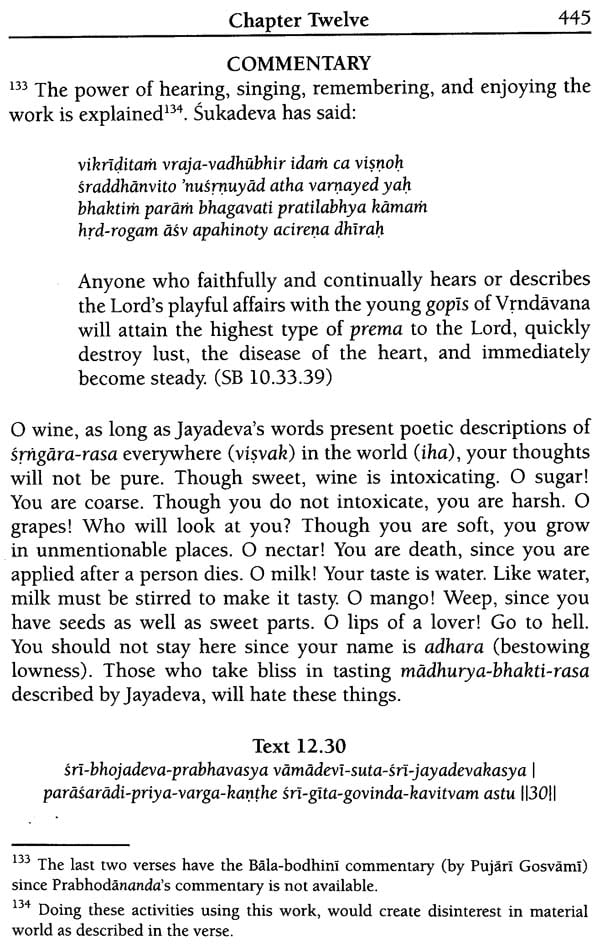
Gita Govinda With the Commentaries of Srila Prabodhananda Sarasvati
Book Specification
| Item Code: | NAY822 |
| Author: | H. H. Bhanu Swami |
| Publisher: | Iskcon, Chennai |
| Language: | Transliteration With Word-to-Word Meaning, English Translation and Detailed Commentary |
| Edition: | 2018 |
| Pages: | 447 |
| Cover: | HARDCOVER |
| Other Details | 8.50 X 6.00 inch |
| Weight | 600 gm |
Book Description
Gita Govinda became a major cultural influence in Orissa. and spread to Andhra, Tamil Nadu an; Kerala, and had an influence upon the local dance forms of those states. As well Gita Govinda became a popular subject of painting in Rajasthan around 1600 CE. William Jones published an English translation of the work in 1792 CE. It has since been translated in the major languages of the world. It is regarded as an example of the finest Sanskrit poetry.
The various portions of the work are set to specific ragas (selection of notes) and talas (beats). However various editions of the work have different ragas and talas for a particular section. The renditions at the present time often use different ragas and talas.
There are twelve chapters, each titled after Krsna in his various moods. Each chapter is divided in several prabandhas, usually having eight verses with a chorus recited with each verse. There are twenty four prabandhas in the work. Prabhodananda Sarasvati has written a commentary on this work for the Gaudiya sampradaya.
He is a great inspiration for many devotees around the world and he preaches Krishna consciousness in Japan, Malaysia Russia and India. His Holiness Bhanu Swami maharaja began to translate Srila Prabhupada's books into Japanese. F. continues with this translation service to this day, giving us the nectar from the Bengali and Sanskrit works of the previous' Vaishnava acharyas to enhance our understanding of the Gaudiya Vaishnava philosophy. He is also a member of the, Governing Body Commission of ISKCON.
His main work is Gita Govinda, depicting the love of Radha and Krsna. The famous description of the ten avataras is included in it at the beginning. Through this work, the ten avataras became well known. Krsna is not included as one of the ten avataras, but is regarded by Jayadeva the source of all the avataras. This thus supports the conclusion of Srimad Bhagavatam as explained by the Gosvami hundreds of years later. Caitanya Mahaprabhu during his stay in Puri would recite verses of Gita Govinda in remembrance of the pastimes of Radha and Krsna.
Gita Govinda became a major cultural influence in Orissa, and spread to Andhra, Tamil Nadu and Kerala, and had an influence upon the local dance forms of those states. As well Gita Govinda became a popular subject of painting in Rajasthan around 1600 CE. William Jones published an English translation of the work in 1792 CE. It has since been translated in the major languages of the world. It is regarded as an example of the finest Sanskrit poetry.
The various portions of the work are set to specific ragas (selection of notes) and talas (beats). However various editions of the work have different ragas and talas for a particular section. The renditions at the present time often use different ragas and talas.
There are twelve chapters, each titled after Krsna in his various moods. Each chapter is divided in several prabandhas, usually having eight verses with a chorus recited with each verse. There are twenty four prabandhas in the work.
Book's Contents and Sample Pages
